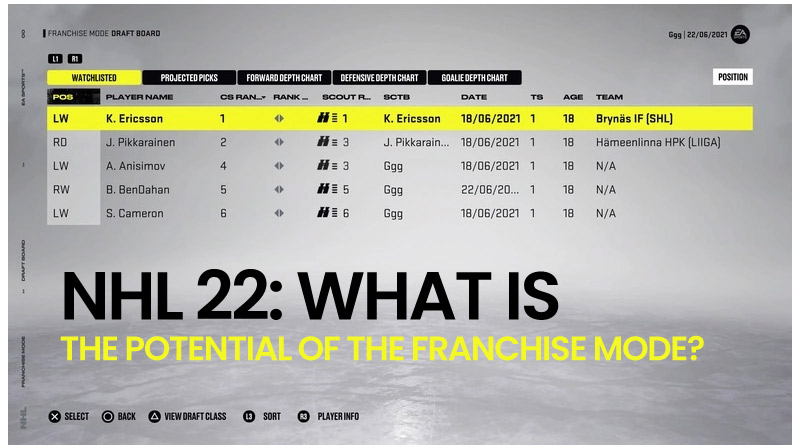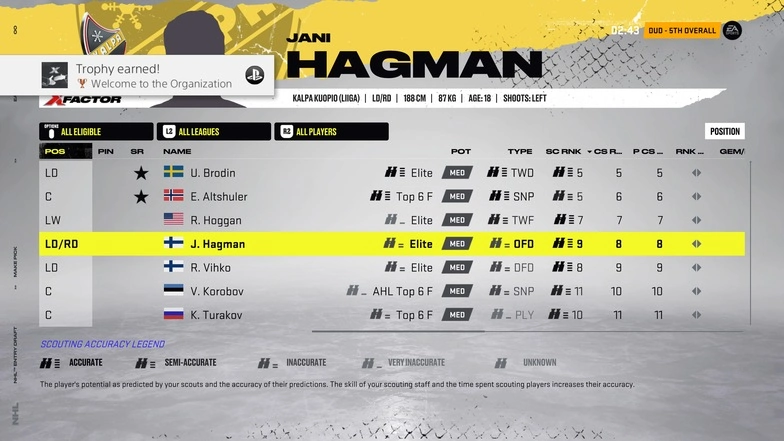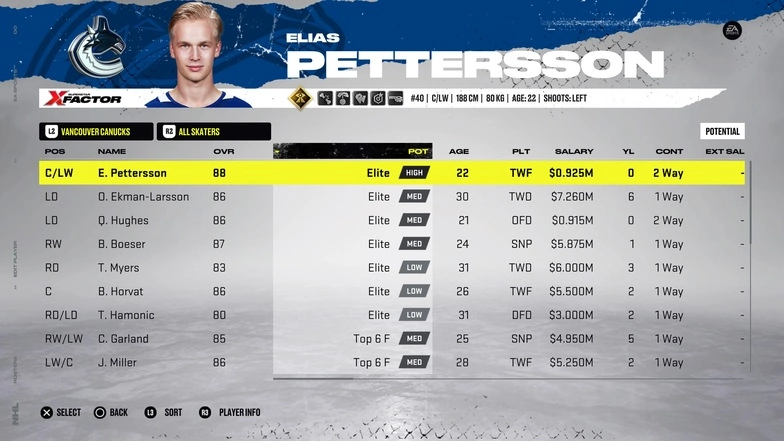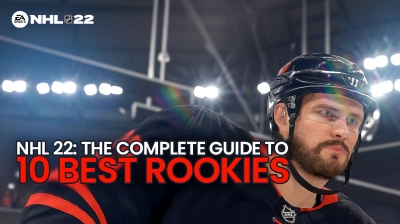($) USD
0
In NHL 22, building your ideal team is the ultimate goal. To win the game, the choice of players is a fundamental determinant. Drafting and training players under the franchise model are one of the most valuable aspects of NHL 22-for many players. This is the biggest reason they even play the franchise model. In this article, we will share what the potential is in NHL 22.

There is something very confusing for new players, which is to understand and use player potential to determine the best young players in NHL 22. There is no comprehensive in-game guide for this, so many players tried to solve the problem intuitively and ended up drafting a disappointing talent. Player potential in NHL 22 is not so simple, but it can be figured out. The following is how the potential of the NHL 22 franchise model works.
Player potential refers to the player's expected upper limit and his accuracy/probability level to reach the upper limit.

There are nine potential levels in the game:
And there are four levels of accuracy:
You can think of these accuracy levels as variance or the range of possibilities you can expect. For example, after drafting and development, a senior top 6 F player may become a top 9 F or elite forward (+/- 1 difference). On the other hand, Med Top 9 F players have a more comprehensive range of possibilities. He can be an elite player or the last six players (the difference is +/- 2).
Here, we also need to separate the scout label from the development potential. Although these two things look the same, they are used in different ways.
The scout tag is used to identify the most talented players before the draft. They show you the quality of the scout report, not the actual potential of the player. Once the player joins your team, you will see their development potential.
Once you have selected a player and reviewed his actual development potential, there is still room for change. Although the initial development potential is usually entirely accurate, playing time and roles often impact things.

Similarly, when considering the upper limit of the player, you should keep in mind the accuracy of the development potential.
Therefore, players with high development potential and high accuracy are likely to develop steadily and realize their potential. Although "much better" situations are rare, players with Med accuracy may be much better or worse than initially thought. Nevertheless, you can still see the young players of Med Top 6 F turning into elite players or falling behind completely.
The following is a list of all current NHL 22 players with the highest ratings. I will focus on young players because I think everyone's goal is to work hard for the future.
There are a few young players with the franchise or elite high potential in NHL 22:
| Position | Name | Current Team | OVR | Potential |
| C/RW | Nathan Mackinnon | Avalanche | 93 | Franchise High |
| C/LW | Leon Draisaitl | Oilers | 93 | Franchise Med |
| C | Connor McDavid | Oilers | 95 | Franchise Med |
| C | Auston Matthews | Maple Leafs | 92 | Franchise Med |
| C/RW | Sam Reinhart | Panthers | 85 | Elite High |
| C | Jack Hughes | Devils | 84 | Elite High |
| LW | Lexis Lafreniere | Rangers | 82 | Elite High |
| C/LW | Elias Petterson | Canucks | 88 | Elite High |
The following are all other young players with Elite Med potential, in no particular order:
Conclusion:
If you want to have the ability to dominate in the NHL 22 game, then the player potential in the franchise model is an essential knowledge that you must understand and master. Through the above content, you can spend NHL 22 Coins to buy it. If you need NHL 22 Coins, you can visit the U4GMm website.
After drafting/signing young players, please pay attention to the changes in their development potential and take practical actions to make the most of each talent. After all, seizing the opportunity of one or two players is not the worst thing in the world. I like to take risks on the low or middle top 6 players instead of pursuing the high-level elite all the time. You will find these players easier to find, and it will be more rewarding to develop them into superstars.

The latest season of NHL 22 is about to begin. The four-game modes in the new season can make players experience and enjoy the mood. In the new season, the HUT Ultimate Team mode is the most worthy of expectations. If you want to form an outstanding team, the choice of players is indispensable. In this post, we will share the ten best rookies.

